Withaferin A inhibits Chikungunya virus nsP2 protease and shows antiviral activity in the cell culture and mouse model of virus infection
- PMID: 39775571
- PMCID: PMC11723598
- DOI: 10.1371/journal.ppat.1012816
Withaferin A inhibits Chikungunya virus nsP2 protease and shows antiviral activity in the cell culture and mouse model of virus infection
Abstract
Chikungunya virus (CHIKV) is a mosquito-transmitted alphavirus causing fever, myalgia, and debilitating joint swelling and pain, which in many patients becomes chronic. The frequent epidemics of CHIKV across the world pose a significant public health burden necessitating the development of effective antiviral therapeutics. A cellular imaging-based high-content screening of natural compounds identified withaferin A (WFA), a steroidal lactone isolated from the plant Withania somnifera, as a potent antiviral against CHIKV. In the ERMS cells, WFA inhibited CHIKV replication early during the life cycle by binding the CHIKV non-structural protein nsP2 and inhibiting its protease activity. This inhibited the viral polyprotein processing and the minus-sense viral RNA synthesis. WFA mounted the nsP2 protease inhibitory activity through its oxidising property as the reducing agents N-acetylcysteine and Glutathione-monoethyl ester effectively reversed the WFA-mediated protease inhibition in vitro and abolished the WFA-mediated antiviral activity in cultured cells. WFA inhibited CHIKV replication in the C57BL/6 mouse model of chikungunya disease, resulting in significantly lower viremia. Importantly, CHIKV-infected mice showed significant joint swelling which was not seen in WFA-treated mice. These data demonstrate the potential of WFA as a novel CHIKV antiviral.
Copyright: © 2024 Sharma et al. This is an open access article distributed under the terms of the Creative Commons Attribution License, which permits unrestricted use, distribution, and reproduction in any medium, provided the original author and source are credited.
Conflict of interest statement
The authors have declared that no competing interests exist.
Figures
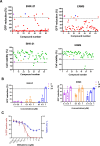
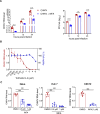




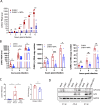
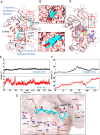


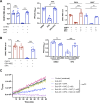

Similar articles
-
Recent advances in phytocompounds as potential Chikungunya virus non-structural protein 2 protease antagonists: A systematic review.Phytomedicine. 2025 Jan;136:156359. doi: 10.1016/j.phymed.2024.156359. Epub 2024 Dec 29. Phytomedicine. 2025. PMID: 39756312
-
Identification of a cell-active chikungunya virus nsP2 protease inhibitor using a covalent fragment-based screening approach.Proc Natl Acad Sci U S A. 2024 Oct 15;121(42):e2409166121. doi: 10.1073/pnas.2409166121. Epub 2024 Oct 10. Proc Natl Acad Sci U S A. 2024. PMID: 39388272 Free PMC article.
-
4'-Fluorouridine inhibits alphavirus replication and infection in vitro and in vivo.mBio. 2024 Jun 12;15(6):e0042024. doi: 10.1128/mbio.00420-24. Epub 2024 May 3. mBio. 2024. PMID: 38700353 Free PMC article.
-
Novel Mutations in nsP2 Abolish Chikungunya Virus-Induced Transcriptional Shutoff and Make the Virus Less Cytopathic without Affecting Its Replication Rates.J Virol. 2019 Feb 5;93(4):e02062-18. doi: 10.1128/JVI.02062-18. Print 2019 Feb 15. J Virol. 2019. PMID: 30487275 Free PMC article.
-
Antivirals against the Chikungunya Virus.Viruses. 2021 Jul 5;13(7):1307. doi: 10.3390/v13071307. Viruses. 2021. PMID: 34372513 Free PMC article. Review.
Cited by
-
How Can Plant-Derived Natural Products and Plant Biotechnology Help Against Emerging Viruses?Int J Mol Sci. 2025 Jul 22;26(15):7046. doi: 10.3390/ijms26157046. Int J Mol Sci. 2025. PMID: 40806173 Free PMC article. Review.
-
Quantification of Lewy body pathology by cerebrospinal fluid endpoint dilution RT-QuIC in a neuropathological autopsy cohort of clinically heterogeneous participants.Acta Neuropathol. 2025 Jun 23;149(1):67. doi: 10.1007/s00401-025-02904-4. Acta Neuropathol. 2025. PMID: 40549179 Free PMC article.
References
-
- ECDC. 2023. European Centre for Disease Prevention and Control. https://www.ecdc.europa.eu/. Accessed
MeSH terms
Substances
LinkOut - more resources
Full Text Sources
Medical

